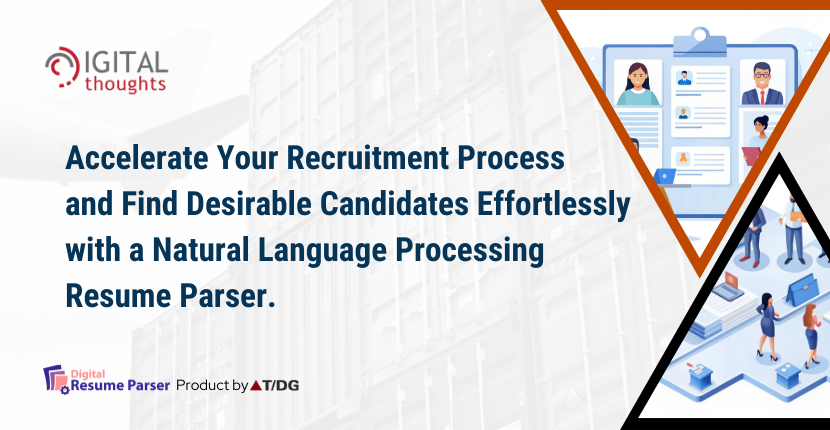5 Best Advantages of Resume Parser with Natural Language Processing and Accelerating Recruitment Process

The employment process cannot be completed without both job seeking and job providing. Shortlisting resumes based on the requirements of the company, however, can be a laborious task. Resume screening can be done in the same way that technology makes any complicated task simple. Recruiters can expedite and automate the resume screening process by utilizing Resume Parser with Natural Language Processing (NLP), which guarantees the selection of top talent while conserving time and money.
With the help of the Resume Parser with Natural Language Processing (NLP) algorithm, we can extract important resume-related information including skills, experience, and qualifications. Resume Parser with Natural Language Processing (NLP)s' primary goal is to extract the necessary candidate data without requiring human review of every resume, which eventually results in smarter approach for candidate screening.
When working with large amounts of data, the translation of a CV or resume into prepared text or structured information is a necessary prerequisite to facilitate review, analysis, and comprehension. Resume parsing is the process of taking an unstructured resume or CV as input and producing structured output data. An NLP model called a resume parser can extract data from resumes, regardless of their structure, including skills, universities, degrees, names, phones, designations, emails, linkages to other social networking platforms, and nationalities.
5 Benefits of DRP- Resume Parser with Natural Language Processing
Extraction of Keywords:
You can automatically extract pertinent keywords and phrases from resumes by utilizing natural language processing (NLP). Methods such as word embedding or to find important terms associated with abilities, credentials, and experience can be used for extraction of keywords. Thanks to DRP’s NLP ability, recruiters can now swiftly screen desirable candidates.
Predictive Analytics:
Recruiters can now expedite the screening process and save time by rapidly identifying resumes that fulfil certain job requirements thanks to NLP’s predictive analytics. Using natural language processing (NLP), you can use predictive analytics to predict candidate performance and suitability. Utilize machine learning algorithms to examine past data and trends in order to identify the applicants who have the highest chance of succeeding in particular positions. Recruiters can rank candidates according to their prospective impact according to predictive analytics, which increases the efficacy and efficiency of resume screening procedures.
Automated Categorization:
Automating text analytics using natural language processing (NLP) can also be helpful. Resumes can be automatically categorized into appropriate groups or categories. Utilize topic modelling approaches or clustering algorithms to organize resumes according to content similarity. Recruiters can concentrate on particular criteria or job roles by using an automated resume screening system to organize resumes into manageable subsets. This streamlines the resume screening process. Here are several methods for employing NLP to automate the screening of resumes.
More Accurate Parsing:
Our solution does more than just find keywords; unlike many resume parsers, it also looks deeper into the meaning of the words. For example, the software utilizes machine learning to find any point in the manuscript where the writer mentions their skills and pulls data from these parts, rather than looking for a section titled "Skills."
Streamlined Efficiency:
Using machine learning algorithms, resumes may automatically extract important information from applicants, including certifications, work experiences, school backgrounds, and talents. This automation greatly expedites the hiring process by reviewing a large number of resumes in a fraction of the time it would take a human reviewer. It also guarantees that no candidate is missed.
Employing natural language processing (NLP) to extract data for the purpose of resume shortlisting has several advantages, such as enhanced efficacy, precision, and expandability. Recruiters can make better hiring judgments and streamline their workflows by utilizing NLP techniques such as named entity recognition, keyword extraction, and semantic analysis. In addition to saving you time and increasing efficiency, natural language processing aids in making the ideal decision.
